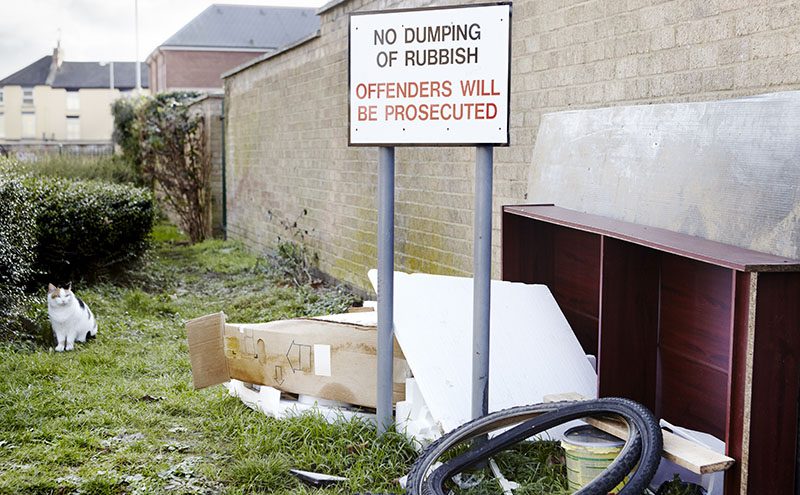
All councils must be more active to investigate and punish the anti-social behaviour of fly-tippers as nothing less than a policy of zero tolerance should be acceptable says GMB London
In the year to end of March 2017 46 local authorities in the East of England had to clear 75,447 incidents of fly-tipping. During the same period these councils took 51,201 separate actions to investigate and deal with fly-tippers.
There was a huge variation both in the number of incidents of fly tipping and the level of activity by councils in trying to find the perpetrators and punish them.
Colchester reported no actions taken in 2016-17 against fly-tipping.
The next lowest ratio of local authority actions to fly-tipping incidents was Breckland with 0.02 followed by East Hertfordshire with 0.05, South Norfolk with 0.13, Great Yarmouth with 0.17 and Brentwood with 0.22.
Southend-on-Sea was the most active local authority in the East of England with 7.5 actions to incidents followed by Forest Health with 2.88, St Edmundsbury with 2.6, North Norfolk with 2.58 and East Cambridgeshire with 1.79.
The local authority with the highest number of fly tipping incidents in 2016-17 was Peterborough with 8,186, over 10% of the East of England total. Next highest is Great Yarmouth with 7,993 (also over 10% of East of England total) fly-tipping incidents followed by Basildon, with 5,762, Norwich with 5,264, Luton with 4,946 and Stevenage with 4,287.
The local authority with the lowest amount of fly-tipping incidents was Uttlesford with 193 followed by South Cambridgeshire with 211, East Cambridgeshire with 214, Suffolk Coastal with 223 and Forest Heath with 264.
In England there were 1,002,154 incidents of fly-tipping with 474,460 actions taken by local authorities.
Councils now have extensive powers to take action against fly tipping. There can be more than one action per incident and an action takes the form of one or more of the following: Investigation, warning letter, statutory notice, fixed penalty notice, duty of care inspection, stop and search, vehicle seized, formal caution, prosecution or an injunction [see notes to editors for definitions].
Set out in the table below are the 2016-2017 figures for 46 Local Authorities in the East of England region ranked by lowest ratio of Local Authority actions to number of fly-tipping incidents.
The tables have been compiled by GMB London region, see notes to editors for sources and definitions.

Thurrock submitted incomplete data for quarters one and two, and had unresolved data queries for quarters three and four, so an estimate was made by Defra for the full year. Total incidents were provided but the return was missing breakdowns by land type, waste type, a size, so estimates were made based on the proportions from 2015/16.
Warren Kenny, GMB London regional secretary, said,
“Fly tipping is deeply anti social behaviour and can never be tolerated.
“Councils have to develop and implement a culture of zero tolerance so that those who fly tip understand that the chances of being identified and punished are very high.
“Councils need to learn from each other and as well as having investigation and enforcement teams they need to mobilise the full hearted support of the local community for the policy of zero tolerance.
“Given the prevalence of mobile smartphones, authorities should make it easy for members of the public to send them pictures of anti-social fly-tipping incidents as they happen in the full and certain knowledge that these incidents will be followed up.
“These latest figures show that some councils are not as proactive as they should be in dealing with fly-tipping. GMB is calling on all councils to be more active to investigate and punish the anti social behaviour of fly-tippers. Nothing less than a policy of zero tolerance should be acceptable.”








